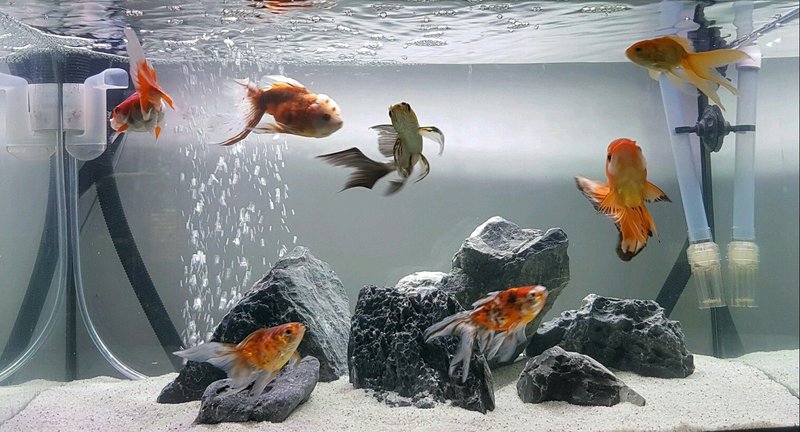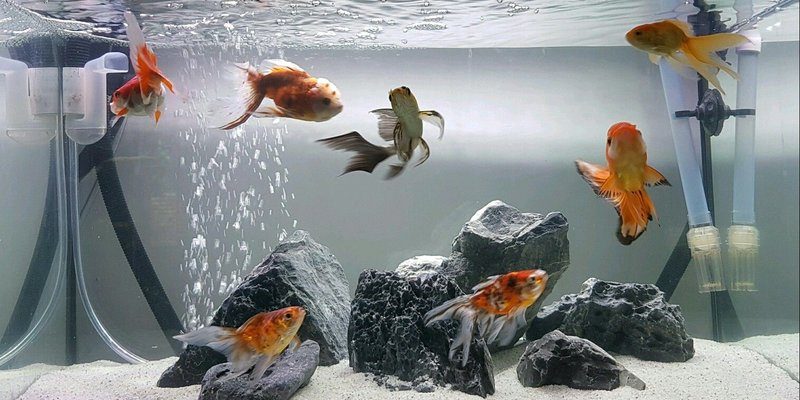
Plants can seem daunting at first, especially when you consider the myriad of options available. Some might even wonder if goldfish and plants can coexist peacefully, given that goldfish are known for their nibbly behavior. Here’s the good news: with careful selection and the right substrate, your goldfish can enjoy a lush, lively aquarium filled with plants that not only look good but also improve water quality. Let’s dive into how to set this up!
Why Choose Plants for Your Goldfish Tank?
You might be asking, why go through the effort of adding plants to your goldfish tank? The truth is, plants offer numerous benefits beyond just being pretty. First off, they help oxygenate the water, which is crucial for your goldfish’s health. Goldfish, like many fish, rely on oxygen in the water to breathe. Plants produce oxygen as they photosynthesize, helping create a more life-sustaining environment.
Additionally, plants provide a natural source of shelter and hiding spots. Goldfish can sometimes feel stressed in open tanks without places to retreat. With some lovely greenery, your fish will have the option to hide when they’re feeling shy or just need a break. It’s like having a cozy nook in your home—it’s comforting!
Lastly, plants can help absorb some of the unwanted nutrients in the water, like nitrates. This is important because it keeps the overall water quality better, which means less frequent water changes for you. Less work and happier fish? Sounds like a win-win, right?
Best Types of Plants for Goldfish Tanks
Here’s the thing: not all plants are created equal when it comes to goldfish tanks. Goldfish can be notorious plant-nibblers, so choosing plants that can withstand a little munching is essential. Here are some top picks:
- Anacharis: This fast-growing, hardy plant is perfect for goldfish tanks. It floats well and provides ample hiding spots while being tough enough to survive some chewing.
- Java Fern: Known for its resilience, Java Fern can be tied to rocks or driftwood. Goldfish might munch on its leaves, but this plant usually bounces back quickly.
- Hornwort: Another floating plant, Hornwort does an excellent job at absorbing excess nutrients and making your tank look lush. It’s also tough enough for the goldfish to nibble on without killing it.
- Cryptocoryne: These plants come in various shapes and colors. They grow slowly, so goldfish are less likely to destroy them quickly. Plus, they thrive in a variety of conditions.
These plants not only enhance the aesthetic appeal of your aquarium but also create a thriving environment for your goldfish.
Choosing the Right Substrate
Now that we’ve covered plants, let’s talk about substrate. This is the material that covers the bottom of your tank, and it plays a big role in both the health of your plants and your goldfish. You might think gravel is the go-to substrate, but there’s a bit more to it.
For goldfish, it’s important to avoid sharp or small gravel that can cause harm to their delicate fins or be ingested. Instead, consider using larger, smooth gravel or sand. This type of substrate is gentle on your goldfish and allows for better water flow. If you choose sand, make sure it’s a kind that won’t compact too much—goldfish like to dig around!
Also, remember that the substrate needs to support your plants. Some plants, like rooted varieties, will benefit from a nutrient-rich substrate. This way, they can absorb the nutrients directly from the soil. Consider a layer of nutrient soil topped with larger gravel or sand for a balanced approach.
Creating a Balanced Ecosystem
When setting up your goldfish tank, think of it as crafting a delicate balance. You want plants, substrate, and fish to coexist harmoniously. Start by planting your greenery before adding your goldfish to the tank. This will let the plants establish themselves without the added stress of fish swimming around them.
Once your plants are in, keep an eye on how well they’re growing. If you notice them wilting or not thriving, that could be a sign of poor water conditions or inadequate lighting. It’s vital to provide proper light—ideally, around 10-12 hours of light each day—to keep your plants healthy and vibrant.
Lastly, consider adding some snails or shrimp to your tank. They can help clean up algae and keep the plants healthy. Just make sure they’re compatible with your goldfish, as not all species get along well.
Common Problems and Solutions
You might be wondering about the usual hiccups that can come with maintaining a planted goldfish tank. One common issue is algae growth. If you find green fuzzies taking over your tank, it’s often a sign of excess nutrients or too much light. Lowering the light intensity or reducing lighting hours can help control this.
Another issue is plants getting uprooted. Goldfish love to dig and toss around substrate, which can disturb delicate roots. A simple solution is to plant sturdier plants or anchor them more securely using rocks or heavier pieces of driftwood.
Lastly, watch for fin nipping. If you notice your goldfish getting a bit too excited around their plants, it could lead to damaged fins. In this case, providing more hiding spots can help them feel less territorial and reduce aggressive behavior.
Maintaining Your Goldfish Tank
Once your goldfish tank is set up, maintaining it is key to keeping everything in harmony. Regular water changes—about 20-30% weekly—are essential for keeping the environment healthy. Make sure to monitor temperature and pH regularly, as goldfish prefer a stable environment.
Don’t forget about trimming your plants. Just like a garden, your aquarium greenery needs occasional pruning to stay healthy. This not only prevents overgrowth but also promotes new growth, which keeps your tank looking fresh.
Lastly, be patient. It might take time for both your plants and goldfish to adapt to their new home. Watch them flourish together, and enjoy the process of creating a thriving aquatic world right in your living space.
Creating a beautiful and healthy aquarium for your goldfish really is a rewarding experience. By choosing the right plants and substrate, you’re not just decorating their home; you’re also enhancing their quality of life. Most importantly, it’s about providing them with a space where they feel safe, happy, and stimulated.
So go ahead, dive into the world of aquatic gardening! With the right choices and a little care, you’ll have a stunning goldfish tank that’s both a joy to look at and a fantastic environment for your finned friends.

